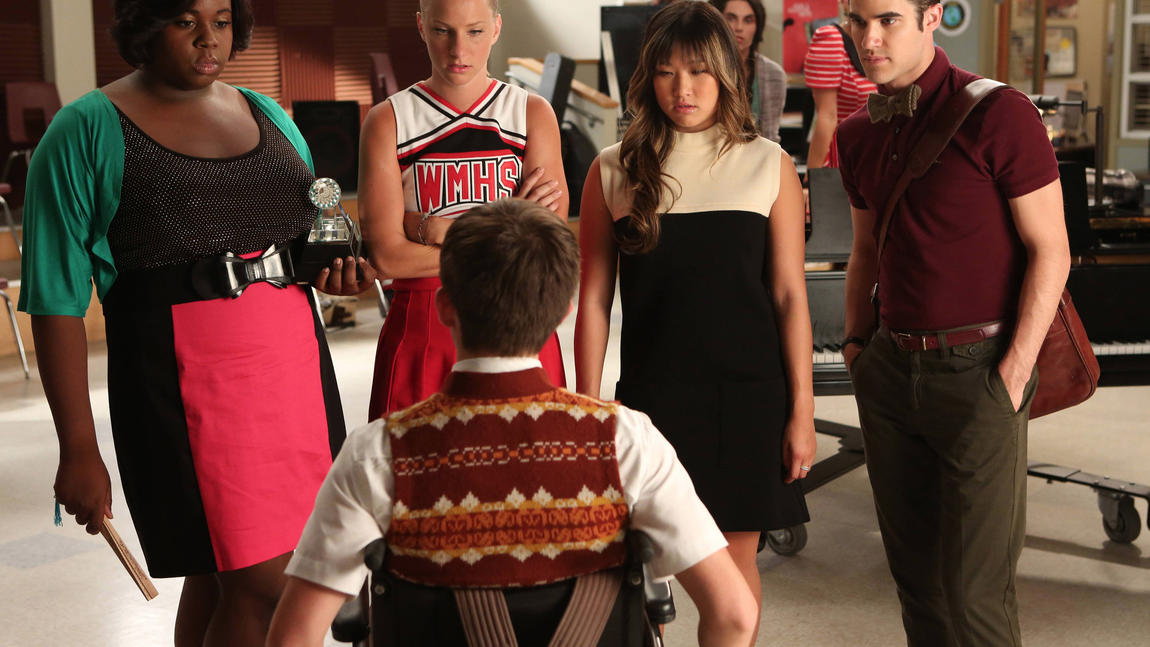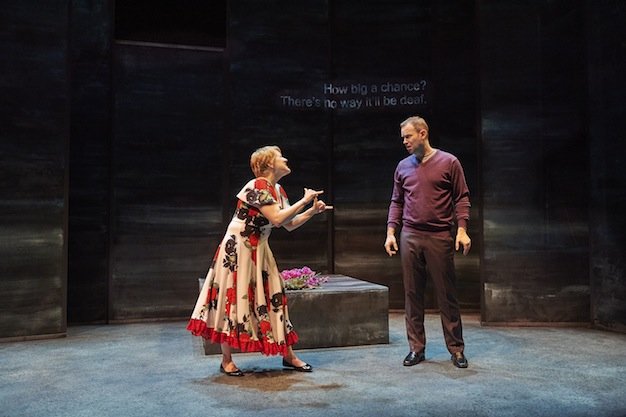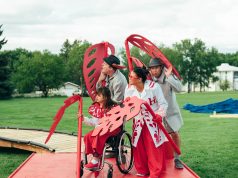 In light of the recent first-ever Disability Inclusion Roundtable in Beverly Hills on in late 2016, it seems fitting to talk about bodies with disabilities on stage.
In light of the recent first-ever Disability Inclusion Roundtable in Beverly Hills on in late 2016, it seems fitting to talk about bodies with disabilities on stage.
This summer, the Ruderman Foundation released a study that focussed on the representation of people with disabilities on television. The study revealed that although 20% of the (U.S.) population has a visible or invisible disability, less than 1% of TV characters have a disability of any kind. Furthermore, 95% of the characters with disabilities on TV are portrayed by able-bodied actors (see Artie Abrams, Glee).
Although I do not have statistics for the theatre scene, I cannot doubt that they would be similar – although perhaps slightly improved by certain theatre companies and festivals that intentionally aim to bring artists with disabilities together.
There has been a lot of criticism from artists with disabilities about these statistics and calls for change both in light of this study and before it came out, as people with disabilities and disability advocates added their voices to conversations around diversity in media and the arts.
Actor Danny Woodburn and Jay Ruderman, president of the Ruderman Foundation, co-wrote an article this summer entitled, “Why Are We Ok with Disability Drag in Hollywood?”, in which they compare these statistics to only 5% of female characters actually being played by women, or 95% of black characters being played by white people. It would be ludicrous, and we as a society would not stand for it. Yet somehow the voices of people with disabilities are still not being heard, and performers with disabilities remain largely underused and unemployed, and people with disabilities remain unrepresented in film, television, and theatre.
“It’s a matter of access to employment,” said Woodburn at the Disability Inclusion Roundtable last week. 18-year-old actor Micah Fowler adds, “Just give us (people with disabilities) a chance.”
So here’s the question: how do we as the theatre and performing arts community, strive to include artists and performers with disabilities in the diverse landscape of the performing arts? As an able-bodied woman, I will draw on the voices and examples of artists with disabilities in order to present each example.
- Tell Their Stories
Perhaps the most straightforward way is to tell stories featuring disabled cast performers whose abilities and disabilities correspond to those of the characters they are playing. An example of this is Cahoots/ Theatre Passe Muraille’s production of Ultrasound by Adam Pottle, performed in May 2016.
The play tells the story of married couple Alfonse and Miranda, who are both deaf or hard of hearing and use ASL, or ASL and speech, to communicate. They are thinking of having a child and debate whether or not they should use eugenics to ensure that the child is deaf – motivated mostly by Alfonse wanting to continue deaf culture, and by his fear that he will not be able to relate to a hearing child.
The play utilized English, ASL, and surtitles to explore deaf culture and featured deaf actors Chris Dodd and Elizabeth Morris. Pottle himself also has hearing loss in both ears. It is a poignant example of artists with disabilities telling their own stories, and both deaf and hearing audiences enjoying and being enriched by the experience.
- Cast Disabled Actors in Roles Which Don’t Showcase Disability
Woodburn and Ruderman call for roles for actors with disabilities that neither emphasize nor hide their disability. In their article in the Los Angeles Times, Danny Woodburn and Jay Ruderman write that television studios rarely hire actors with disabilities if the story line does not emphasize disability, unlike with other minority groups who can exist on screen without the thing that makes them a minority being the center of their narrative, such as with characters of colour.

- Cast Disabled Actors as Able-Bodied Characters
Actor RJ Mitte is best known for his role on Breaking Bad as Walter White Jr. Both the actor and the character have Cerebral Palsy, although unlike his character, Mitte doesn’t walk with the use of crutches. He is also a firm believer in the power of actors with disabilities on screen. “You will see able-bodied actors winning Oscars for playing disabled characters, and I have no problem with that. I think it’s an opportunity for that able-bodied actor to learn about that disability, to change their perception on disability. But you will never see a disabled character win an Oscar for playing a disabled character — ever. And I think it should go both ways; I think a disabled actor should be able to audition for a non-disabled role.”, he says in an interview.
- Use Technology
This may be the way to help achieve Mitte’s dream of having an actor with a disability receive an Oscar for playing an able-bodied character. “If we’re going to employ Computer Graphics and makeup to create the illusion of disability,” Woodburn and Ruderman write, “then we should also be willing to do the reverse. For example, in movies that center around a sudden disability caused by an accident, such as paraplegia, studios could employ CG to make a wheelchair using actor able-bodied for the parts of the movie that call for it.” I wonder, too, how we could use technology to create a similar experience in theatre.
With the creation of CdnStudio, designed to connect theatre artists from across the country, we know that we have so many more possibilities to create truly inclusive theatre nation-wide than we have ever before. Let’s push the boundaries of our creativity, our empathy and our technology and see what we can create together.









